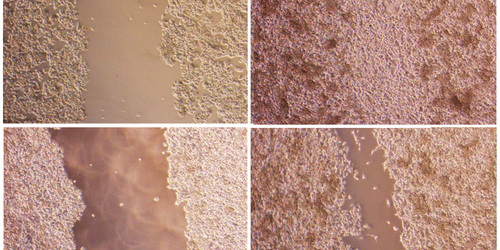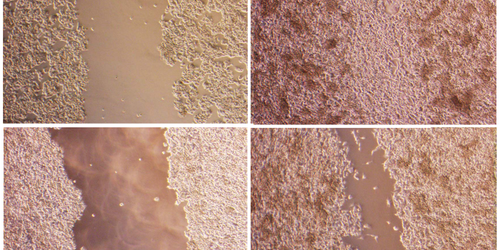A New Gauge for Age
We may try to hide it, but we all get older. Yet at the cellular level, it’s not clear what factors determine age. A new study of biological aging has found parallels to physical aging in glasses and other soft materials. The researchers investigated wound healing in cell cultures, finding that “older” cultures heal more slowly, just as “older” glasses relax more slowly. Based on this analogy, the team developed a model in which the age of a cellular system is related to the degree of biochemical “trapping” of cells in an arrested (nongrowing) state. They suggest that loosening this trapping mechanism could slow aging.
Yuting Lou from the University of Tokyo and colleagues performed wound healing assays, which involved scratching a thin line in the middle of a sheet of cells grown on a dish. Over time, the cells closed the wound by migrating into the open space. However, unlike conventional assays, the cells went through a controlled waiting period prior to wound creation.
The team found that longer waiting periods resulted in slower healing rates. To explain this aging, the team used an agent-based model, in which cells can be either in a growth state or an arrested state, depending on various environmental signals. These signals evolve with time so that it becomes harder for older cells to transition from arrested to growth states. The cells essentially become trapped in arrest and thus respond more slowly to the presence of a wound. In glasses, a similar model of potential energy traps affecting the motion of constituent particles has been used to explain why these materials become less responsive to perturbations as they age.
This research is published in Physical Review E.
–Michael Schirber
Michael Schirber is a Corresponding Editor for Physics based in Lyon, France.





